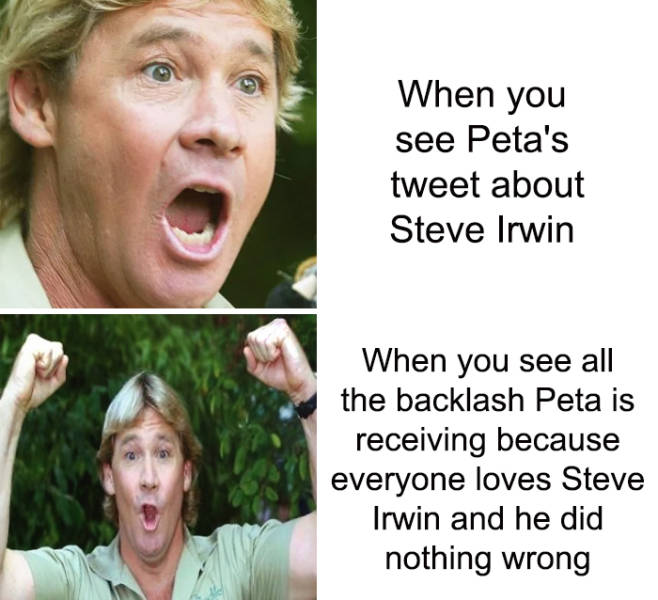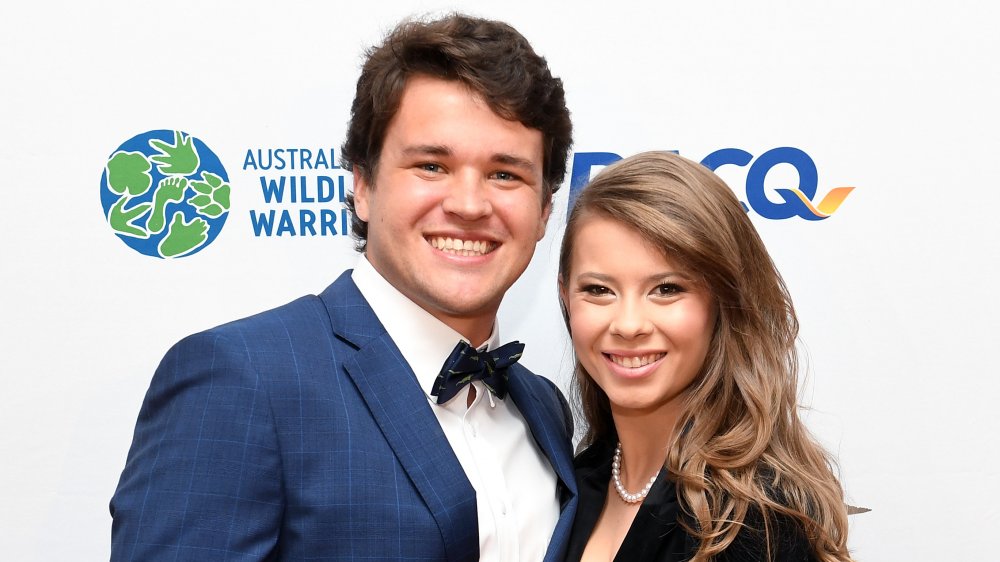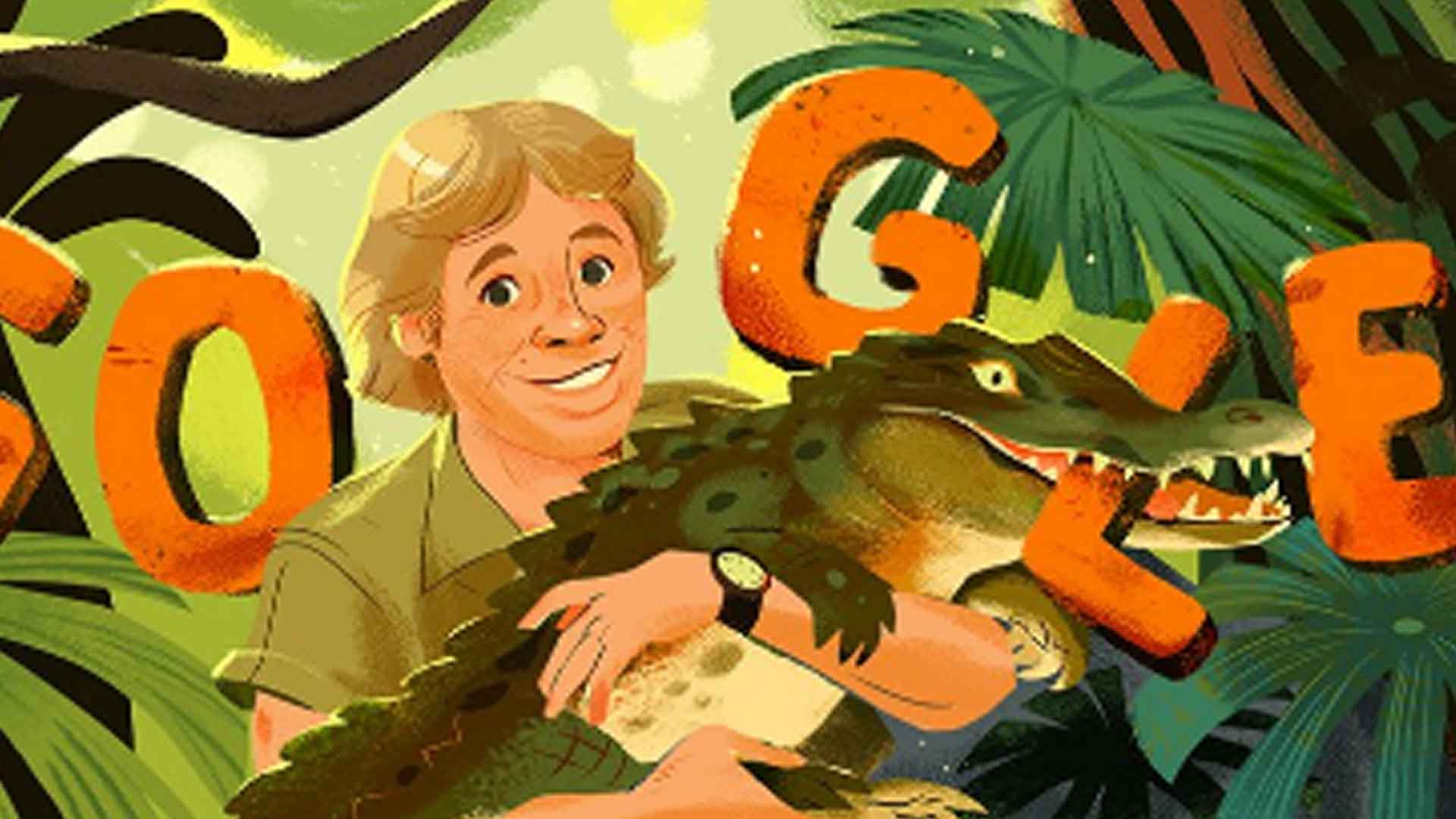Why Was Steve Irwin Criticized? Unpacking Public Perceptions
Detail Author:
- Name : Kaleb Streich
- Username : allen84
- Email : effertz.kaylee@pfeffer.biz
- Birthdate : 1992-07-02
- Address : 4561 Crystel Knolls North Rainastad, CO 59163
- Phone : (925) 656-1074
- Company : Cormier, Hettinger and Braun
- Job : Copy Machine Operator
- Bio : Fuga nemo accusantium quaerat earum qui eos aspernatur rerum. Et architecto quae maxime ea soluta aut. Velit dolor saepe accusantium quam.
Socials
instagram:
- url : https://instagram.com/shea_dev
- username : shea_dev
- bio : Accusamus sint exercitationem mollitia itaque a. Delectus rem enim enim unde aliquid odio.
- followers : 1067
- following : 455
linkedin:
- url : https://linkedin.com/in/sheajacobs
- username : sheajacobs
- bio : Quia aut expedita aperiam asperiores.
- followers : 1993
- following : 2341
facebook:
- url : https://facebook.com/jacobss
- username : jacobss
- bio : Optio eaque asperiores consequatur quam et.
- followers : 6441
- following : 1750
Steve Irwin, often called the "Crocodile Hunter," truly captured the hearts of many people around the world with his vibrant energy and a very deep love for animals. His television shows and his work at the Australia Zoo brought wildlife right into our living rooms, sparking a kind of passion for creatures that many had never felt before. You know, his way of doing things, his direct approach, it was really something quite unique. He just had a way of making you care about animals, even the scary ones, in a very immediate sense.
Yet, like most public figures who stand out, Steve Irwin also faced his share of questions and, you know, some strong criticism during his time in the public eye. People had different thoughts about his methods, his choices, and just how he presented himself. It's a bit like, why do some words change their meaning over time? Or, why is Filipino spelled with an 'f' but Philippines with a 'ph'? There are reasons, often rooted in history or how people come to see things, and the same goes for how public figures are viewed. It's really quite a complex picture when you think about it, isn't it?
This article aims to explore why some people found reasons to criticize Steve Irwin. We will look at the different points of view that came up, what specific events caused a stir, and how these discussions played out in public. It's a chance to understand the various sides of a story involving a person who, frankly, left a very big mark on the world. We'll try to get a better sense of the full picture, you know, the good parts and the parts that made some people raise an eyebrow. It's about looking at the whole thing, very carefully, to see what was going on.
Table of Contents
- Steve Irwin: A Brief Look at His Life
- Early Career and Rise to Fame
- Controversies Unpacked: Why Some People Had Concerns
- The Baby Incident: A Major Point of Discussion
- Animal Welfare Concerns and Perceived Stress
- Conservation Versus Entertainment: A Balancing Act
- Criticism From Some Experts and Academics
- Public Perception: How Views Shifted Over Time
- His Enduring Legacy and Impact
- Frequently Asked Questions About Steve Irwin's Criticisms
- Wrapping Things Up
Steve Irwin: A Brief Look at His Life
Steve Irwin came into the world in February of 1962, born in the Australian state of Victoria. His folks, Bob and Lyn Irwin, were very much into animals. They actually opened a small park for reptiles in Queensland, which later grew into what we know as the Australia Zoo. So, you know, Steve grew up surrounded by all sorts of creatures, learning about them from a very young age. This upbringing truly shaped his life's path, giving him a deep connection to the wild world. He spent his childhood helping his parents, getting to know the animals up close, which, in a way, set the stage for everything he would later do.
He was a natural with animals, especially crocodiles, which he learned to handle from his dad. This hands-on experience was a big part of his early life. It's almost like he was destined to work with these creatures. He took over running the park in the 1990s, and that's when things really started to take off for him. He met his wife, Terri, and together they began a show that would make them household names around the globe. This show, "The Crocodile Hunter," showed his unique style and his absolute love for animals. It brought him a lot of fame, and, you know, people just loved watching him interact with the wild things.
Here are some basic details about his life:
| Detail | Information |
|---|---|
| Full Name | Stephen Robert Irwin |
| Born | February 22, 1962 |
| Birthplace | Upper Ferntree Gully, Victoria, Australia |
| Died | September 4, 2006 |
| Cause of Death | Stingray barb to the heart |
| Spouse | Terri Irwin |
| Children | Bindi Irwin, Robert Irwin |
| Known For | "The Crocodile Hunter" television series, Australia Zoo |
| Occupation | Zookeeper, conservationist, television personality |
Early Career and Rise to Fame
Steve's early days were spent working at the family's park, which was then called the Queensland Reptile and Fauna Park. He was very much involved in the day-to-day care of the animals, particularly the crocodiles. His skills in catching and relocating crocodiles, often those that had become a nuisance near human settlements, really stood out. This work was dangerous, but he did it with a kind of fearless energy that was quite remarkable. It showed his deep commitment to both animal welfare and public safety, you know, in a practical way.
The turning point for Steve came when he met Terri Raines, an American naturalist, in 1991. They got married the next year, and their honeymoon actually involved filming a documentary about crocodile rescue. This footage, you know, it became the very first episode of "The Crocodile Hunter." The show quickly became a huge hit around the world. People were drawn to Steve's raw enthusiasm, his catchphrases, and his truly hands-on approach to wildlife. He would jump into situations that seemed really risky, all to show people these animals up close. This was a completely different way of presenting wildlife, and it truly resonated with a lot of folks.
His fame grew quite rapidly, and so did the Australia Zoo, which became a major tourist spot. He used his platform to talk about conservation, to get people excited about protecting animals and their homes. He was, in a way, a very loud voice for the wild. His shows were not just about entertainment; they were also about teaching people, making them feel a connection to creatures they might otherwise fear. He really believed that if people understood animals, they would want to save them. That was a big part of his message, and it reached millions of viewers, which is pretty impressive, if you think about it.
Controversies Unpacked: Why Some People Had Concerns
While Steve Irwin was loved by many, his public image and the way he interacted with animals sometimes led to quite a bit of discussion, and, you know, some real criticism. It wasn't always clear to everyone why he did certain things, or what his true intentions were. Some people felt his methods were a bit too aggressive or that they put animals under stress. These feelings often came from different ideas about how humans should behave around wild creatures, especially when filming them for a show. It's a bit like asking why hugs and kisses are XOXO and not OXOX; there's a reason, or at least a common practice, and when someone does something different, people notice and ask questions, don't they?
The criticisms usually centered on a few key areas. People wondered if his actions were always for the animals' good, or if they were, you know, sometimes more for the show. There were questions about the safety of those around him, especially his children. And some in the scientific community had concerns about how his actions might influence public perception of wildlife research. These were not small worries; they were serious points that sparked a lot of conversation, both among regular viewers and among experts. It shows that even when someone has good intentions, their actions can be seen in many different ways, which is just how things are sometimes.
The Baby Incident: A Major Point of Discussion
One of the most talked-about events that brought a lot of criticism was what happened in 2004. Steve Irwin was filming a show at the Australia Zoo, and he was holding his baby son, Robert, in one arm while feeding a chicken to a crocodile with the other. This scene, you know, it was aired on television, and it caused a huge uproar. Many people, understandably, felt that it was extremely dangerous. They saw a very small child too close to a large, powerful wild animal, and that just seemed wrong to them. It made a lot of folks wonder about his judgment, and it sparked a really big debate about child safety and animal handling. It was a moment that really got people talking, very loudly, about what was okay and what was not.
The public reaction was immediate and quite strong. News outlets everywhere reported on it, and people from all walks of life shared their opinions. Some defended Steve, saying he was a professional and knew what he was doing, and that he would never put his child in actual harm's way. They pointed out his deep experience with animals. However, a great many others were just horrified. They felt it set a very bad example, especially for kids watching at home, who might not understand the risks involved. It was a moment that, you know, truly highlighted the tension between his unique style and what many considered to be common sense safety. It was a very public display, and it had very public consequences for his image, that's for sure.
Government agencies in Australia even looked into the incident, though no charges were brought against him. The laws about child involvement in dangerous activities were somewhat unclear at the time, or perhaps not fully set up for such unique situations. Nevertheless, the incident really stuck in people's minds. It became a prime example for those who believed Steve Irwin sometimes went too far for the sake of entertainment, or that he was, in a way, too casual with serious risks. This event, honestly, shaped a lot of the criticism he received for years afterward. It was a big deal, and it's still remembered by many people today, nearly two decades later.
Animal Welfare Concerns and Perceived Stress
Another area where Steve Irwin faced criticism was related to his direct, hands-on way of interacting with animals. People would often see him jumping on crocodiles, wrestling snakes, or getting very close to other potentially dangerous creatures. While he always said his actions were meant to educate and show respect for the animals, some viewers and animal welfare groups felt that his methods might cause stress or harm to the creatures involved. They wondered if the animals were truly comfortable with such close and often very physical encounters. It's a bit like, why do people use certain words that can be confusing? It's about how things are perceived, isn't it?
Critics argued that his approach, while exciting for television, could be seen as harassing the animals. They suggested that chasing or pinning down a wild animal, even for a short time, could be frightening for it. Some also worried that his shows made it seem okay for untrained people to try similar things, which could put both humans and animals in danger. These concerns were not about his love for animals, which was rarely questioned, but about the specific techniques he used. It was about the perceived impact on the animals' well-being, which, you know, is a very important point for many people who care about wildlife. They just wanted to make sure the animals were okay.
There was also a discussion about whether his loud, energetic style added to the animals' stress. When he would shout his catchphrases or move very quickly around a creature, some felt it was not the best way to interact with wild animals, who might interpret such behavior as a threat. These discussions often highlighted the different philosophies within the animal care community. Some prefer a very hands-off approach, emphasizing observation without interference, while Steve's style was, you know, very much the opposite. This difference in approach led to ongoing debates about the best way to promote conservation through media. It's still a topic that people talk about, really, even now.
Conservation Versus Entertainment: A Balancing Act
A significant part of the criticism Steve Irwin received revolved around the balance between his role as a conservationist and his role as an entertainer. His shows were incredibly popular, drawing huge audiences, which meant more people were exposed to messages about wildlife protection. However, some felt that the entertainment aspect, with its dramatic encounters and thrilling stunts, sometimes overshadowed the serious conservation message. They questioned if the primary goal was education or if it was, you know, just to create exciting television moments. This is a question that comes up a lot when people try to make serious topics popular, isn't it?
Critics suggested that by focusing so much on the "hunter" aspect, and on wrestling dangerous animals, he might have inadvertently promoted a


